
Pathways, Benefits, and Tips
A Comprehensive Guide to New Zealand PR Immigration
What is New Zealand Permanent Residency (PR)?
While Permanent Resident Visa (PRV) grants residency status, Resident Visa is typically the first step towards PR. After holding a Resident Visa for a few years, individuals can apply for PR status, which grants more permanent, unrestricted residency rights.
Key Pathways to New Zealand PR
Skilled Migrant Category (SMC)
The Skilled Migrant Category is one of the most popular pathways for obtaining PR in New Zealand. This points-based system is designed for people with skills that are in demand in New Zealand.
- Eligibility:
- You must be under 56 years
- You need to have a job offer or qualifications that align with New Zealand’s skill
- Points are awarded based on factors like age, work experience, qualifications, and a job offer in New The minimum points required is 160.
- You may need to provide evidence of your English language ability through a test like IELTS or
- Pathway to PR:
- The first step is to apply for a Resident Visa under the Skilled Migrant Category, which is typically granted for up to 2
- After living in New Zealand for a certain period (usually 2 years), you can apply for
Permanent Resident Visa (PRV).
- Applicants must demonstrate they have been employed in New Zealand for at least 12 months in a job that meets New Zealand’s skill
Tip: Focus on gaining high-demand skills that are listed on New Zealand’s Essential Skills in Demand list. This increases your chances of qualifying under the Skilled Migrant Category.

Work to Residence Visa
Eligibility:
- Long-Term Skill Shortage List Work Visa: This visa is for individuals who have a job offer in an occupation on New Zealand's Long-Term Skill Shortage List (LTSSL).
Pathway to PR:
- Once granted a Resident Visa, you can apply for Permanent Resident Visa after living in New Zealand for 2 years.
Tip: If you want to apply for a Work to Residence Visa, focus on sectors where New Zealand has significant skill shortages, such as healthcare, engineering, and IT.

Family Stream Visas
Eligibility:
- Spouse or Partner: If you are married to or in a long-term partnership with a New Zealand citizen or resident, you can apply for a partner visa. You need to prove that your relationship is genuine and stable.
- Dependent Children: Children under 24 years of age who are dependent on a parent who is a New Zealand citizen or resident can apply for a dependent child visa.
- Parent Category: If you are the parent of a New Zealand citizen or resident, you may be able to apply for residency under the Parent Category (subject to a parent sponsorship process).
Pathway to PR:
- Once granted a resident visa through family stream categories, you can apply for Permanent Resident Visa (PRV) after living in New Zealand for 2 years. Tip: For a smoother family reunification process, ensure that all required documentation (proof of relationship, financial support, etc.) is thorough and accurate.
Investor Category
New Zealand offers two primary investor pathways: the Investor 1 and Investor 2 categories. These are designed to attract individuals who can make significant contributions to the New Zealand economy.
- Investor 1 Category: Requires an investment of NZD 10 million over 3 This category is aimed at high-net-worth individuals who can make a large financial contribution to New Zealand.
- Investor 2 Category: Requires an investment of NZD 3 million over 4 Applicants must also meet age, health, and character requirements.
- Pathway to PR:
- Both categories allow you to apply for a Resident Visa once the investment is made, and you can apply for PR after holding your resident visa for 2
Tip: Make sure your investment meets the specific requirements set by Immigration New Zealand, and maintain the investment for the specified duration to qualify for PR.

Entrepreneur Work Visa
Eligibility:
-You must have at least NZD 100,000 to invest in the business (in some cases, the investment amount can be waived if the business is considered high-value or innovative).
-You need to demonstrate that the business is viable and has a positive impact on New Zealand’s economy.
Pathway to PR:
-After running the business for 2 years, you can apply for a Resident Visa and, after holding the visa for another 2 years, you can apply for a Permanent Resident Visa.
Tip: Make sure your business plan is robust and demonstrates how your business will contribute to New Zealand’s economy. A well-prepared business proposal can significantly boost your chances of approval.
Benefits of New Zealand PR
Right to Live and Work
Access to Healthcare
Education
Social Security Benefits
Pathway to Citizenship
Travel Benefits
Tips for a Successful New Zealand PR Application
Ensure Accurate and Complete Documentation
Improve Your English Language Skills
Stay Informed on Policy Changes
4. Seek Professional Assistance
Conclusion
New Zealand offers a variety of pathways to Permanent Residency (PR), from the Skilled Migrant Category to family reunification, investment options, and entrepreneurial visas. With its high standard of living, stunning natural environment, and welcoming atmosphere, New Zealand continues to attract individuals and families from around the world. By understanding the different immigration pathways, preparing the necessary documentation, and following the application process closely, you can increase your chances of obtaining PR and enjoying all the benefits New Zealand has to
